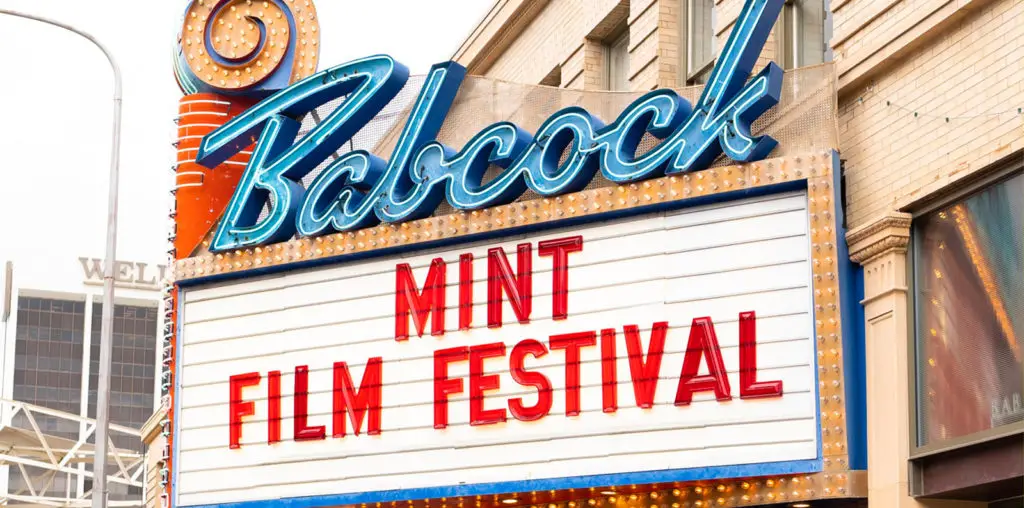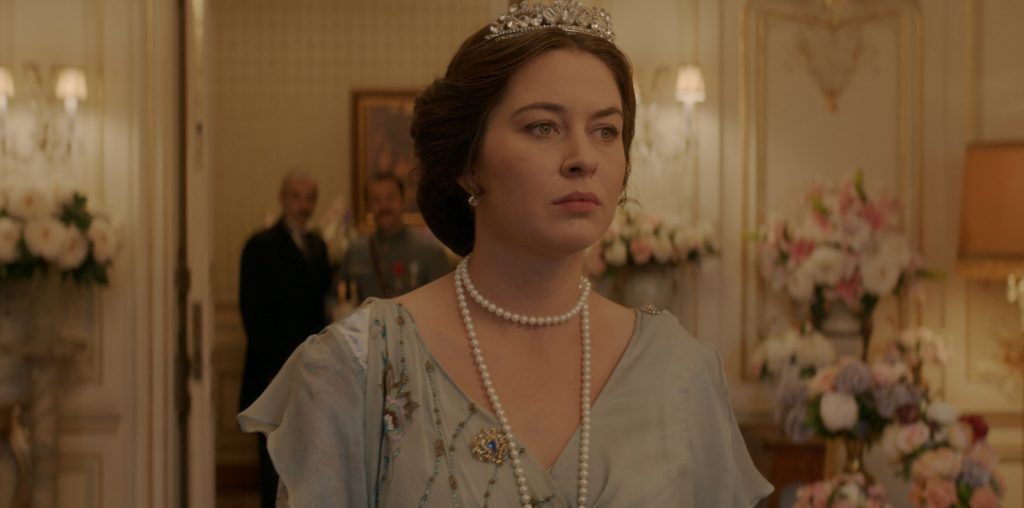
BOOTLEG FILES 139: “The Chant of Jimmie Blacksmith” (1978 Australian classic).
LAST SEEN: In Australia last spring as part of a touring festival of film classics.
AMERICAN HOME VIDEO: None.
REASON FOR DISAPPEARANCE: Not too clear why.
CHANCES OF SEEING A DVD RELEASE: It is long overdue!
Prior to the late 1970s, Australia was something of a cinematic backwater. Occasionally, Hollywood and British production companies would turn up to use the country as a backdrop for films that ranged from the classic (“On the Beach,” “Walkabout”) to the egregious (“Ned Kelly” starring Mick Jagger – and that film still raises plenty of hackles among Aussies!). But the local film scene, for the most part, was sleepy and unimaginative and very few Australian films traveled abroad.
Then, without warning, Australia suddenly experienced an overflow of imaginative filmmaking. Movies such as “Picnic at Hanging Rock, “ ”The Last Wave,” “Mad Max” and its sequels, “My Brilliant Career” and “Breaker Morant” began to appear all over the world. Hitherto unknown talent from behind the camera (including Peter Weir and Bruce Beresford) and on screen (most notably Mel Gibson and Judy Davis) became overnight sensations and were snatched up by Hollywood.
One film from this period that had a significant impact on the shaping of Australian cinema was Fred Schepisi’s 1978 drama “The Chant of Jimmie Blacksmith.” The film broke ground in its country for dealing bluntly with one of the most tragic aspects of Australian history: the racist treatment of the Aboriginal population. For no clear reason, the film has been completely absent from circulation for many years – and its absence is among the most distressing voids in the appreciation of Australian cinema.
“The Chant of Jimmie Blacksmith” is based on a novel by Thomas Keneally (who is best known for writing “Schindler’s List”), which itself was inspired by the real story of Jimmy Governor, an Aboriginal Australian of the late 19th century. In this version, Jimmie Blacksmith is a young man of mixed race who is raised and educated by a Methodist minister and his wife. While the Aboriginal community views him without prejudice, the white society sees him only as a “darky,” a “n****r” and a “black bastard.”
As a young adult, Jimmie is sent out with a reference letter from the minister to seek employment. The racist Australians he encounters, however, do not view him as a peer and he is only able to secure menial labor jobs. At every place he works, he is cheated out of his wages and driven away with violence when he tries to collect his money. For a while, he is employed by a constable who makes regular attacks on a settlement of Aborigines who live in poverty and advanced alcoholism. Jimmie’s shame at his duties forces him to leave this job.
He eventually lands work at a sheep shearing station, where conditions are somewhat more tolerable than he previously experienced. He also has a quickie sexual encounter with a white kitchen servant (who has also been enjoying carnal favors from the other men of the station). When she becomes pregnant, Jimmie marries her (which was highly uncommon for the late 19th century). However, the arrival of the baby – a completely white baby – shows that Jimmie was not the father and his nobility was in vain.
Once more, Jimmie is denied his wages and is fired. But this time, he finally snaps and goes on a killing spree. Using an axe, he murders the wife and daughters of his employer. His half-brother Mort, who had been trailing him throughout his journeys, joins Jimmie as the latter revisits (with gun in hand) all of those who wronged him in the past. Soon the countryside is aflame with the horror of two Aboriginal serial killers on the loose.
Jimmie and Mort, for no clear reason, take a white schoolteacher as a hostage for a short period. This hostage becomes more of a burden, falling lethally ill in the outback. Mort agrees to bring him back to his village, but he is discovered and killed. Jimmie, alone in the wilderness, is left to outrun the hostile society which never wanted him as an equal but only now desires him as a gift for the gallows.
The central power of the film rests in the character of Jimmie Blacksmith, and Schepisi took something of a gamble by casting an untried actor in the lead role. Tommy Lewis, a mechanic (who, like Jimmie, was of mixed race), was discovered by the director’s wife at the airport in Melbourne. Lewis was a handsome and virile presence who looked great on the screen, but he imbued his role with an astonishing depth of emotion. Riding the emotional gamut from great joy (the scene where he performs the chant – actually an Aboriginal dance, not a song – to celebrate the baby’s birth) to utter despair (his final humiliation, shivering and chained in a cold jail cell, his face disfigured from a gunshot wound), Lewis’ performance was nothing less than extraordinary for a film debut.
Not surprisingly, Lewis never had the opportunity to repeat a performance of this magnitude – the Hollywood hawks who swooped up all-white Aussie talent in that era took aim instead at Lewis’ co-star Bryan Brown, who had a minor role in the film as a sheep shearer. Even locally, Lewis was undervalued – the Australian Film Institute outrageously snubbed him in its awards, honoring Ray Barrett (as the constable) and Angela Punch (as Jimmie’s wife) and nominating Peter Carroll (as the hostage) instead. Lewis’ subsequent film career consisted primarily of supporting or guest roles in Australian films (most recently “The Proposition”); he enjoys more recognition today as a musician and composer.
“The Chant of Jimmie Blacksmith” was the first Australian film to play in competition at Cannes. In Australia, however, the film was not a box office success. Audiences were particularly uncomfortable about its presentation of Australia’s troubled racial history and with the notion of an Aboriginal Australian killing white people (especially with an axe).
Overseas, however, the film had more success (although 14 minutes of footage was edited for the international version). It opened in the United States in the fall of 1980 and its popularity was such that it enabled Schepisi to emigrate to Hollywood, where he went on the direct films including “Iceman,” “Roxanne” and “The Russia House.”
So what happened to “The Chant of Jimmie Blacksmith”? It never had a U.S. home video release, although it was made available on Australian home video (but it is not on DVD in that country). The bootleg I acquired came from a private collector, who acquired it from a Japanese VCD release. I have absolutely no idea why this film is still not in commercial circulation – there doesn’t appear to be any problem with the rights to the film or its source property.
Earlier this year, a restored print of “The Chant of Jimmie Blacksmith” was part of a touring classics festival playing in Australian cinemas. Today, that country recognizes its value and importance within the national film heritage. Now if only someone would recognize it enough to bring it back in fuller release here in the United States!
____________________________________________________________
IMPORTANT NOTICE: The unauthorized duplication and distribution of copyright-protected material is not widely appreciated by the entertainment industry, and on occasion law enforcement personnel help boost their arrest quotas by collaring cheery cinephiles engaged in such activities. So if you are going to copy and sell bootleg videos, a word to the wise: don’t get caught. The purchase and ownership of bootleg videos, however, is perfectly legal and we think that’s just peachy! This column was brought to you by Phil Hall, a contributing editor at Film Threat and the man who knows where to get the good stuff…on video, that is.
Discuss The Bootleg Files in Back Talk>>>


Thanks for the update. My review is from 2006, when the film was still unavailable in the US.
The Chant of Jimmie Blacksmith is now available on Netflix streaming (though not on DVD). Netflix just recommended it for me, which led me to this review; I intend to watch it in the near future. One review by a n’flix customer says it has been released as a US format DVD.